Arts
Footloose Indian in London

Somewhere between commutes and late night bashes, I pause and ponder on London's strong historical and cultural linkages with my own roots and "Indianness."
| On a recent visit to London, it struck me how easy it is for Indians educated in English to relate to Britannia. Right from its celebrated buildings and landmarks, childhood memories unzip easily in this vibrant multi-cultural capital. Somewhere between commutes and late night bashes, I pause and ponder on its strong historical and cultural linkages with my own roots and “Indianness.”
Nostalgic Throwback
Sitting in that most enduring of London icons, a red double-decker bus, as it cruised past the houses of parliament, the mind did a back flip to Peter Pan, “the little boy who doesn’t grow up,” merrily flying into the starry sky with Wendy and brothers in tow. A beginning of a thrilling journey made dramatic with the gang silhouetted against the yellow glow of the giant Big Ben. At Harley Street, fact and fiction collide. Outside Baker Street station, an individual wearing a deerstalker cap, pulling on a calabash pipe, hailed passers-by. Sir Arthur Conan Doyle’s illustrious and uncannily gifted sleuth, Sherlock Holmes, was inviting people to his celebrated apartment turned handsome museum. A nominal entrance fee gave you a chance to snoop at a literary heritage. At the National Portrait Gallery, a twinkling Jerome K Jerome hurled me back in time to happy school days and his cheery, lightweight classic Three Men in a Boat and the priceless high jinks of George, Harris, the narrator, and the dog, Montmorency, on their famous Thames boating holiday. During my visit, every time I happened by the river, my mind kept returning to the picnic and the antics of the impossible Uncle Podger and his attempts at hanging a picture.
Gold Paved Streets Who can go to London, see a cobblestone pathway and not think of Dick Whittington? He was in my very first English textbook. Now at Highgate Hill, the pauper turned four-time mayor of London was standing before me darkly, stonily gazing out, his legendary black cat by his side. London’s streets are indeed paved with gold for many enterprising Indians. The list of successful, wealthy individuals, many of whom started from scratch, is legendary. The city boasts over 10,000 Indian businesses. Apparently many Indians peered over Whittington’s shoulders and were dazzled no end by the golden opportunities that greeted them and set to work.
There’s the steel mogul Lakshmi Mittal; the four Hinduja brothers with an impressive presence in global finance, telecommunications, film, transportation and oil businesses; airline tycoon Naresh Goyal; commodities trader hot-shot Anil Agarwal, to cite random names from a Who’s Who in the UK. The Indian Diaspora thrives in several important areas of British life – business, law, media, medicine, engineering, IT, you name it. At the macro-level, Corporate India is presently engaged in what seems like a “reverse colonization” – rapidly gobbling up English firms and well on the way to becoming the Numero Uno foreign investor in the UK. Indians feel at home in London thanks to the hundreds of curry-houses and exquisite restaurants that dish out practically every type of desi khana and a thriving Indian community. A visit sets many rich Indians thinking about a second home. London realtors have their phones buzzing. Homes costing
£500,000 to £1 million are in great demand. Corporate bigwigs with ideas for guesthouses look in Central London. In Belgravia, Mayfair, Knightsbridge, Oxford Street, Marble Arch, St. John’s Wood, Kensington and similar exclusive areas, homes top $10 million. That hasn’t stopped Indian buyers. Even many parents and young corporate climbers see a house in London as a good long-term investment. “Indians flourish in London, not just because of hard work and commitment to education,” says long time resident and economis, Ratnakar Kini, “But because colonial India and its aftermath has prepared them to be ‘propah’ and ‘ready’ for Britannia’s ethnic, linguistic and cultural diversity.” Mecca of Cricket Moving from the world of commerce to the world of cricket. Indian cricket fans invariably make a pilgrimage to that Mecca of cricket, Marylebone Cricket Club, better known throughout the cricketing world as MCC or Lord’s. The whirlwind tour offers up rushes of sepia-tinted images of shorts, rubber balls, endless hours of cricket,
and summer holidays in bungalows. The tour of Lord’s begins, appropriately, at cricket legend W.G. Grace’s statue. Nearby, the museum and the stadium are stocked with images and icons of several Indian cricket greats, such as Sunil Gavaskar, Kapil Dev and CK Naidu. My old scrapbooks had precious pictures, press clippings and autographs of such British cricketing icons as Fred Trueman and Colin Cowdrey. I watched a local match on the hallowed turf from the stands. Somewhere in the distance, there was roar and thunder of another day – a time in 1971 when the spin quartet of Bedi, Chandersekar, Venkataraghavan and Prasanna beguiled their opponents with 197 out of 244 wickets and propelled India to a historic series win.
Face to face with English history On a windy chilly morning at the Tower of London, English history came alive most unexpectedly. There she was in flesh and blood, Queen Anne Boleyn arisen from her execution in 1536. Buxom, rosy cheeked, attired in 1500s modest gear, she caught many a tourist’s eye. Speaking in modern idiom and mixing with commoners, including a woman in hijab, she detailed her dilemma, her heart-touching plight. “I am not a witch,” she cried, anguish writ large on her pretty face, “My sin, if it is a sin, good people, is not producing a male heir. Am I to be tried for treason for that?” Bollywood Chalo
Shakespeare in Love (1998), Elizabeth (1998), Four Weddings and a Funeral (1994), Notting Hill (1999), Blow-up (1966), A Hard Day’s Night (1964), The Italian Job (1969) and French Lieutenant’s Woman (1981). Not to be outdone by their western counterparts, Indian moviemakers are showing up in droves. An endless stream of Indian moviemakers with their colorful stars and crew keeps flooding the city. In 2006, more than 40 Hindi movies were shot in London. Notable blockbusters, such as Cheeni Kum (2007), Kabhi Khushie Kabhie Ghum (2001), Dilwale Dulhaniya le Jayenge (1995), all had London as their inspirational setting, a potpourri of the traditional, modern, diverse and exciting.
As you go around London, you’re likely to bump into nattily clad Hindi movie-buffs lost in the pursuit of making instant connections with reel and real London. Flaunting a recently introduced Bollywood Movie Map, they, gorgeous babes included, are out in force at Hyde Park, Trafalgar Square, Natural History Museum, Tower Bridge, the Royal Albert Hall, Millennium Dome, the houses of parliament, Nelson’s Column, and the London Eye playing spotting games: “Yaar, guess which Shah Rukh Khan movie had this location?” Postcolonial Miasma Movie-crazed, young upwardly mobile desis are “doing” not just Singapore or Dubai, but venturing further to London. Wide-eyed and camera-snappy, like sleuths in a mystery drama, they make tracks to the very locales made popular in umpteen super fillums. Meanwhile the local Indian population is beginning to assert its identity, upbeat, as it cozies up to its hip country-cousins, sampling from a lavish spread after spread of the richness of India’s culture and tradition, joyfully dancing, celebrating everything from prenuptial bashes to big, fat Punjabi wedding galas.
The intrepid British tourism department is rolling out the red carpet, showcasing India-themed programs and festivals from Deepavali and Baisakhi to Durga Pooja and Bharata Natyam to Hindu epics on stage, neatly packaging and selling the country to a new generation of wealthy Indians who it seems don’t tire easily and keep returning for more. That keeps the British cash register jingling merrily in this postcolonial miasma. |

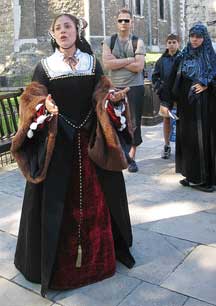
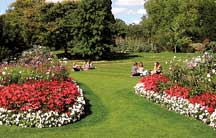
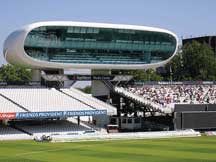
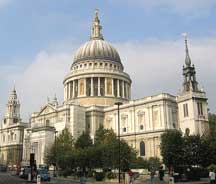



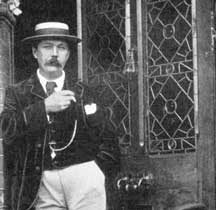

You must be logged in to post a comment Login